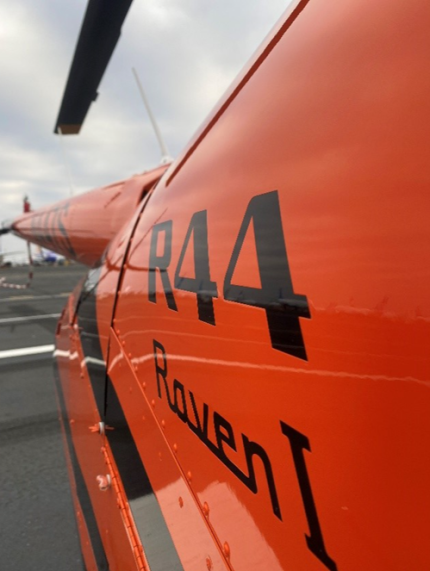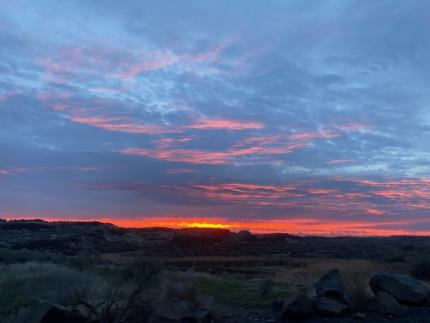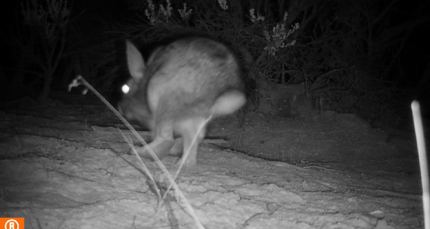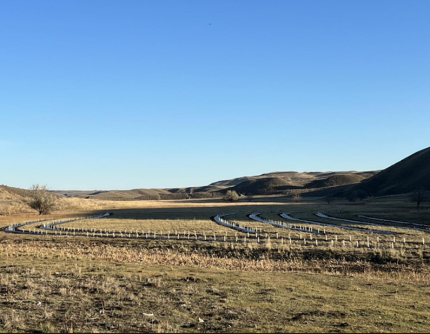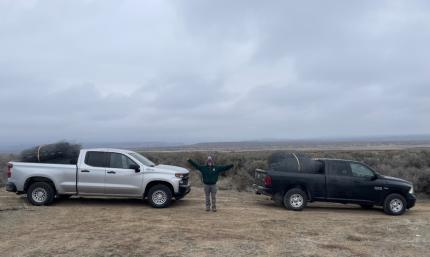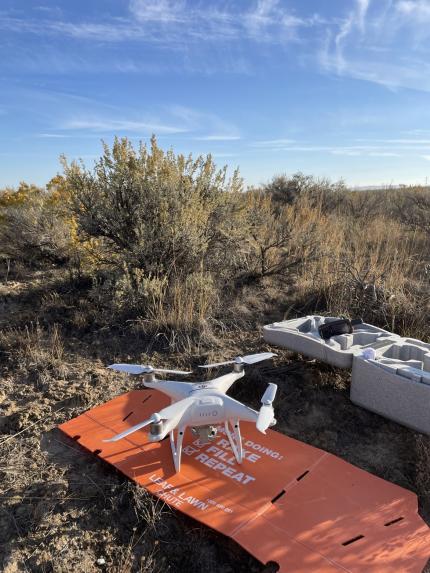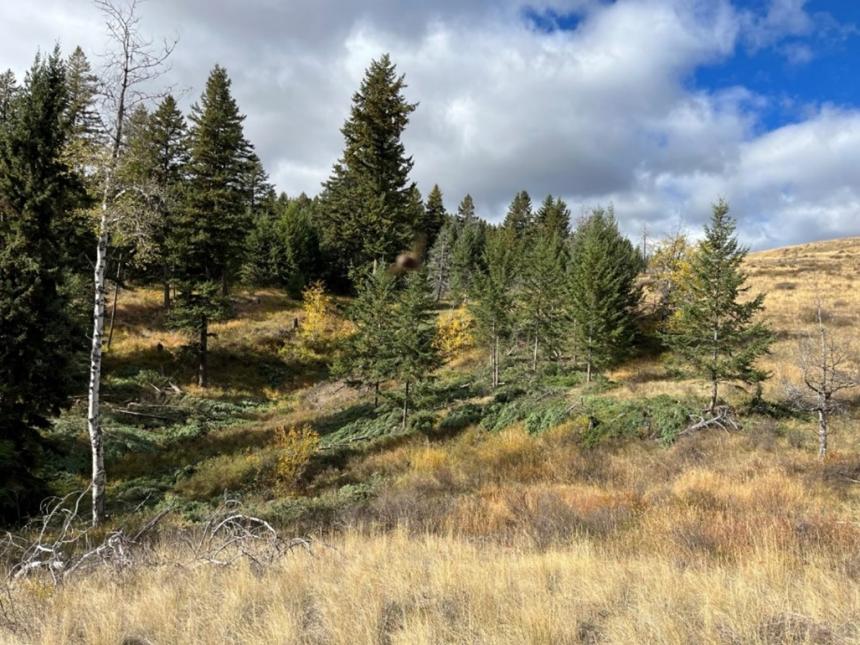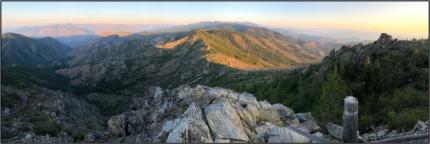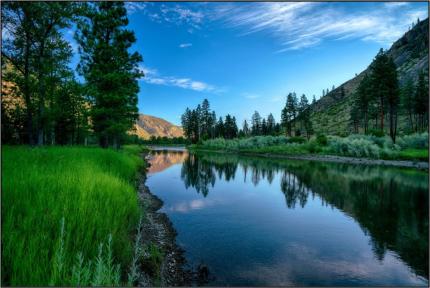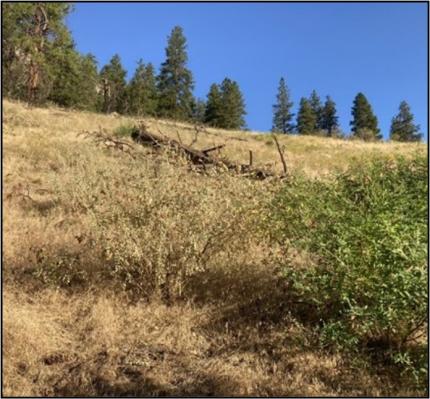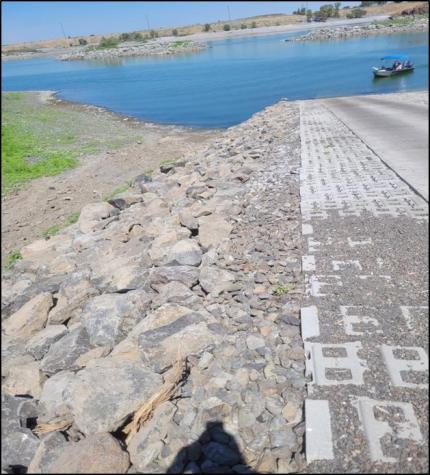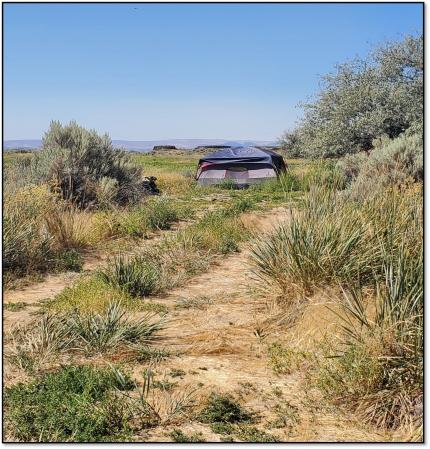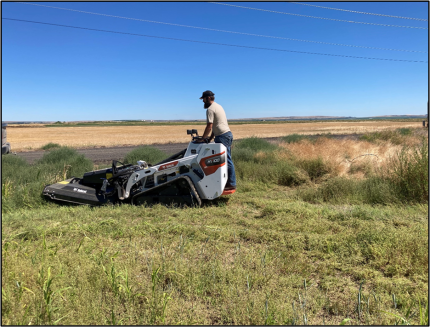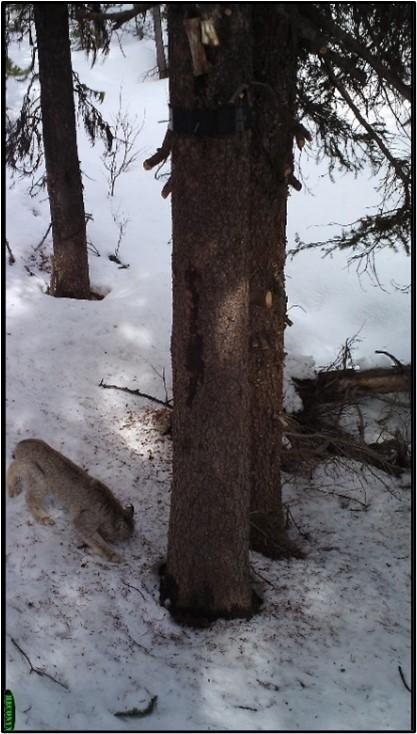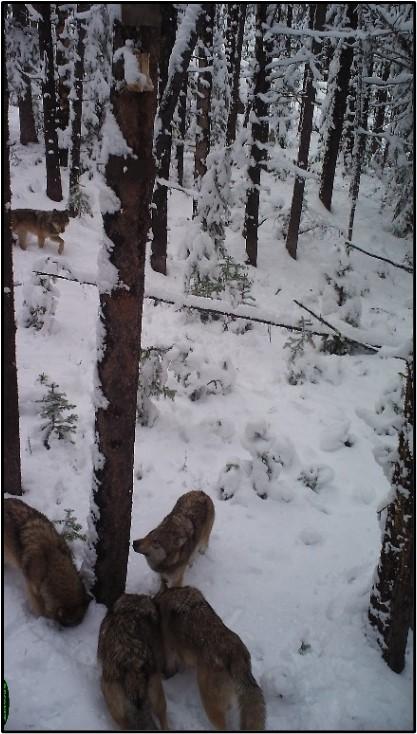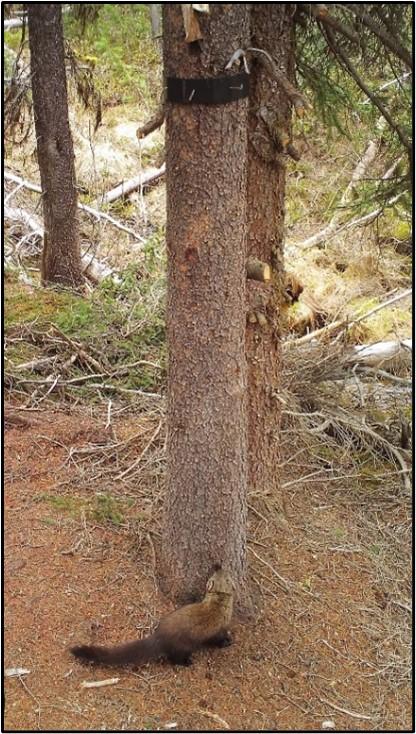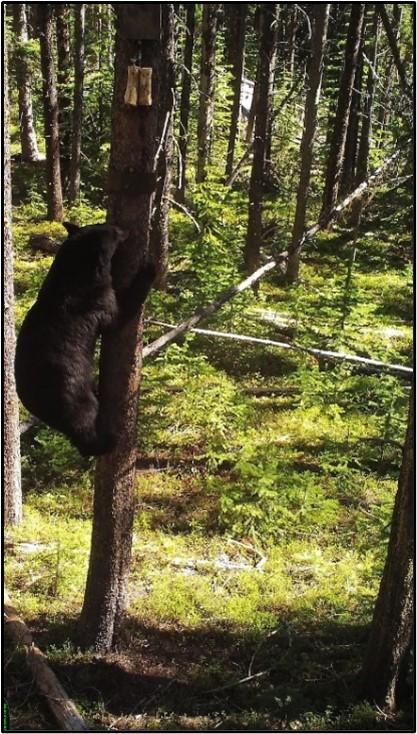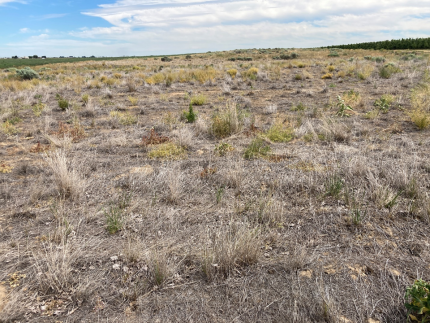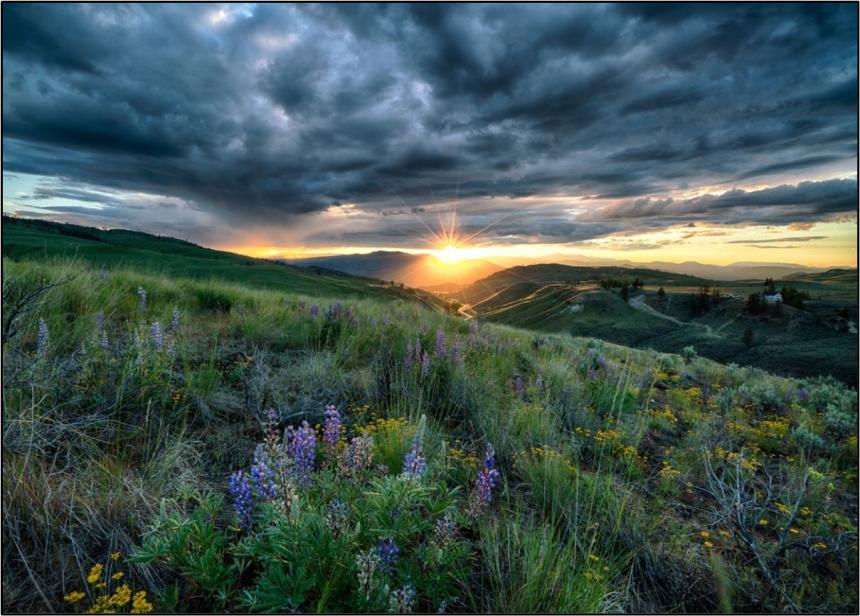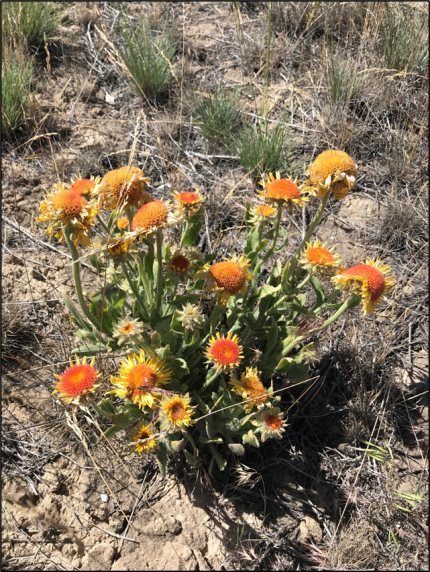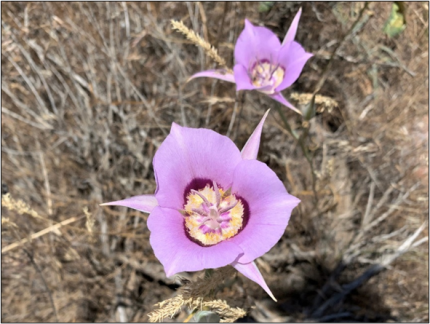Biweekly report Dec16-31 2023 - Region 2 (North Central)
Managing Wildlife Populations
District 6 Lynx Research: Biologist Fitkin assisted the Home Range Wildlife Research crew with the first lynx capture of the season by immobilizing and helping radio-collar a healthy 32-pound male lynx. This was an animal that had eluded capture last season, but a pre-snow trapping effort for this individual specifically proved successful and wrapped up the first season of captures for this 3-year project.
The primary objective of this multi-year project is to see how lynx are using the fire-impacted landscape across a gradient of fire scars of different ages. Results will inform forest and fire management strategies to help maintain adequate lynx habitat in the face of growing wildlife risk. More information on this project and the locally grown Home Range organization can be found here: HOME RANGE. See attached release video.




District 6 Fisher Surveys: Biologists Fitkin and Heinlen finished up deploying remote camera survey stations in District 6 as part of the north Cascades fisher monitoring effort. Stations are equipped with a scent dispenser that will operate periodically from fall through late spring when the cameras will be retrieved. Data from this effort will help determine the current distribution and status of fishers throughout the ecosystem following the recent reintroduction efforts. Many thanks to other staff members and partners that made this herculean effort possible.


Mule Deer Aerial Surveys: Biologists Jeffreys and Eilers finished a multiday aerial winter range mule deer survey of the Chelan and Wenatchee Mountains subherds. The subherds are part of Washington’s east slope Cascades mule deer population which also extends into Okanogan and Kittitas counties.
Biologists observed over 2,000 deer during the course of these surveys and will use these observations to attempt to generate an abundance estimate for the Chelan and Wenatchee Mountains subherds. Ratio data, including buck to doe and fawn to doe ratios, will also be generated from these aerial observations to assess age and sex composition. Wildlife biologists use these data to inform management decisions and harvest regulations.

In the case of the Wenatchee Mountains subherd, biologists will compare ratios gathered from these aerial surveys with those collected via images captured by 15 remote cameras placed along migratory routes crossing Highway 97 between Peshastin and Blewett Pass. If the ratios generated from both methods are similar, cameras may be a viable method for determining herd age and sex ratios moving forward. This would be a far more efficient and far less costly alternative to the current method of obtaining these data via aerial surveys. Not only is the helicopter time extremely expensive, but the weather throughout Chelan County during the timeframe in which these surveys must take place makes it very difficult to actually complete the work.
These surveys are timed to fall within the narrow window between the end of hunting seasons and the onset of antler shedding in late December. After antlers are shed it becomes impossible to reliably differentiate between bucks and does. Low-hanging clouds and patchy fog are prevalent this time of year in Chelan County. In clear weather, biologists can reasonably expect to survey ten subunits per day, achieving the goal of 25 to 30 subunits within three days of flying. This ideal scenario virtually never occurs in reality.
The weather this year was so poor that it took eight days just to complete 20 subunits. The majority of local mule deer winter range was obscured by low-hanging clouds throughout the allotted survey window, leaving biologists grounded at the airport for part of each day and a couple of full days.
Biologists Jeffreys and Eilers managed to get solid survey coverage of the Wenatchee Mountains subherd’s winter range in areas such as Number Two Canyon, Horse Lake area, Sage Hills area, and the foothills south of Monitor and Cashmere. North of Highway 2, biologists surveyed the Chelan subherd’s winter range in areas such as Nahahum Canyon, Swakane, Entiat, Mills Canyon, and Navarre Coulee.




Mule Deer: Early in December, Douglas County Wildlife Area complex staff members assisted with a mule deer survey, identifying deer herds, and estimating herd composition. During this one-day survey, staff observed 254 deer and recorded their location, sex, age, and antler point category.
Mountain Goat Aerial Surveys: Biologists Jeffreys and Eilers attempted to perform a day of mountain goat aerial surveys along the north shore of Lake Chelan. Unfortunately, inclement weather shortened these surveys allowing for the complete coverage of only one survey unit in the Prince Creek area. A total of 11 mountain goats were observed during these surveys, and most were observed very near the approximately 200-foot-thick band of clouds that hovered around 2,000 feet in elevation the entire day across Lake Chelan.


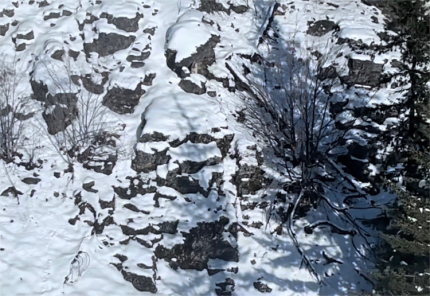
Chelan Audubon Christmas Bird Count: Biologists Eilers and Jeffreys participated in the annual Chelan Christmas Bird Count along with North Central Washington Audubon Society volunteers. This year’s count was coordinated by Assistant Wildlife Area Manager Pavelchek. The Chelan Christmas Bird Count represents the nation’s longest running citizen science project. Every year volunteers all across the United States and in 20 other countries in the western hemisphere gather to identify and count birds in their local communities.
Data collected from the Chelan Christmas Bird Count is used to monitor relative abundance of bird species and assess long-term population trends. Volunteers work alone or as part of a team and they drive and hike around predetermined survey routes or areas. This occurs during a 24-hour period between Dec. 14 and Jan. 5, and they count every single bird observed.
Biologist Jeffreys surveyed an area that included Chelan Gorge and Chelan Butte, while Biologist Eilers surveyed the South Shore of Lake Chelan. Many bird species were observed between these two areas. They spotted all three Washington chickadee species (mountain, black-capped, and chestnut-backed), common loon, golden eagle, bald eagle, and Cooper’s hawk.
One of the most surprising birds encountered was a Lewis’s woodpecker along Chelan Gorge Road. Biologists did not expect to see a Lewis’s woodpecker here in late December because Lewis’s woodpeckers are summer residents in our area, typically arriving to the North Central Cascades in early May and departing by October. To learn more about how you can become involved in the Chelan Christmas Bird Count or another in your area, visit the Audubon website.


Sharp-tailed Grouse: Douglas County Wildlife Area complex staff members have been coordinating with district biologists, research biologists, and the Diversity Program in an effort to capture sharp-tailed grouse at lek sites in the Big Bend Wildlife Area. They placed traps and game cameras in November. Staff members have routinely monitored the game cameras and replenished the corn that is used as bait.
Sharp-tailed grouse have been detected by the cameras. Unfortunately, as observed in early December, there are not enough showing up consistently to trap. The bait that staff members placed in the traps was covered by snow, which might account for the significant decrease in detections this last round. Hopefully, once snow covers the ground again in mid-December, more grouse will be returning to the leks. Staff members hope to trap them and affix a GPS collar to captured birds to gain knowledge on seasonal habitat use.

Providing Recreation Opportunities
Feeding stations: Staff members have been tending to feeding stations that span across the Wells Wildlife Area and Sagebrush Flats units near Brewster. These stations are filled with wheat seed for upland game birds such as quail, pheasants, chukar, and sharp tailed grouse as well as some species of migratory birds. This year the feeding stations received a revamping. They now have lids and gates to keep animals out of the seed buckets. These new gates and lids allow buckets to be filled with seed preemptively in early December so they can be opened when hunting season ends. Wheat that is left over from this project is kept on site and available to the public.

Other
Winter Maintenance: After completing a rather rigorous seeding project in November, this month wildlife area staff members have been tackling various projects to prepare for the winter. These tasks include repairing and maintaining equipment that was used heavily in the fall, as well as winterizing vehicles and spray tanks.
Lands Division Workshop: There was a Lands Division Workshop in Ellensburg where Douglas County Wildlife Area staff members were able to put faces to names and attend lectures on lands related topics. Many attendees were particularly interested in hearing about the projects going on in other districts that differ greatly from their own.


